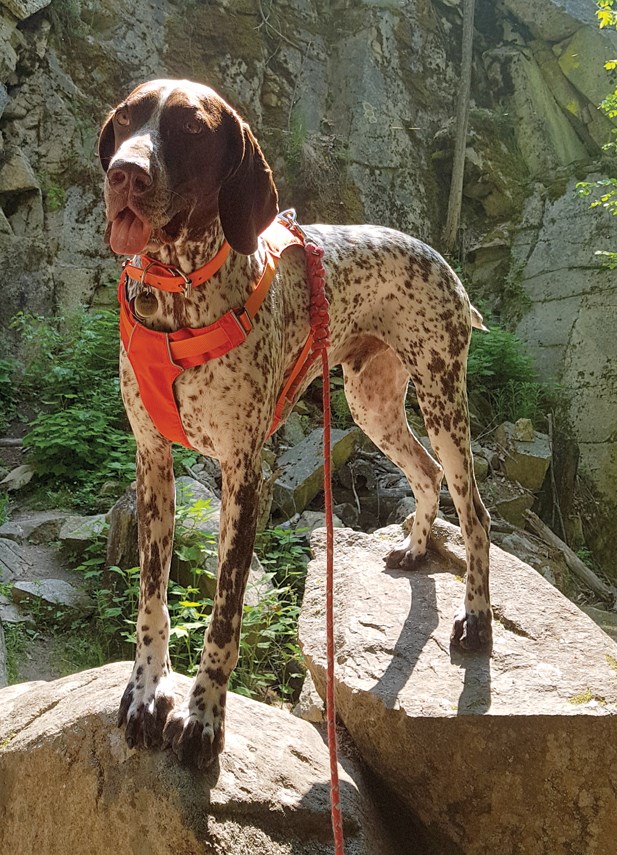Recently a reader wanted to know, “Why do you promote dogs on leashes so often?” and “When do you let your dogs off leash?”
To answer the first question, if you have been reading my columns over the last oh, 20 years or so, you would see that the underlying theme in all of them is to be a responsible dog owner. This means not only providing guidance and leadership to your dog but also to obey leash laws and be respectful to other trail users, which often means to take control of your dog’s behaviour by leashing it! Simple.
The answer to the second question is not as simple.
My dog Carter is a German shorthaired pointer – a hunting dog. Hunting to Carter is like breathing to us humans. It’s in his DNA, he was born with it the same way he was born with fur. His nose is either in the air, or on the ground in search of prey. His eyes are constantly scanning, looking for the slightest movement because he is very “birdy.”
Carter’s off-leash time comes when he goes to work and I allow him to hunt in safe areas, be it for training or in competition. He has been trained to hunt and to track and we compete in tracking, hunt tests, field trials and field dog tests all of which assess a dog’s ability to hunt and perform to his breed standards and he loves it.
Because of his genetics, there is no off switch for Carter, but there is a dimmer switch and that is what our leash walks provide. They allow time for Carter to turn down his hunting dial and just be a regular dog for a while. His leashed walks allow him to remain social with passing dogs and people and it reinforces my leadership as I direct him along the trail. Walking Carter on leash also reinforces the commands that I have taught him when we participate in other forms of outdoor activities other than hunting.
Having a dog like Carter is not for everyone. In fact, I discourage most people from getting a high drive working or sport dog because they are very time consuming and a lot of work. But for me, I would not have it any other way. I love the challenge of training a dog that’s highly driven to work in the sport it was designed for. That strong hunt drive and athleticism makes him the perfect all-round dog for me and people like me. He is an energetic hiking and biking companion in the summer and in the winter his endurance makes him the perfect snowshoe and skijoring companion.
All of these activities require a dog to be on-leash and well trained. So those leashed walks in the summer are also reinforcing the commands and training for his outdoor winter activities. There is always a method to my madness.
My other dog Raider is a mixed breed of border collie, Australian shepherd, Australian cattle dog and a bit of German shepherd. He is in fact, the ultimate herding dog. The desire to herd for Raider is no less than hunting is to Carter, but his needs are different. We start our walk on-leash and we end it on-leash to reinforce leadership because given the chance a herding dog will always take control. Raider has the tendency to get very “herdy,” which means when he is off-leash, he often runs into the back of my legs, or I will knock him under the chin with my heel when I take a step, because he follows me so closely. When I put Raider on leash he stops “working” and happily walks at my side instead of behind me.
Frankly, I really enjoy walking my dogs on leash as I love the connection it allows me and as you can see it’s not always about restricting their fun. In fact it can actually be a helpful training tool allowing dogs and humans to have more fun!
Joan Klucha has been working with dogs for more than 20 years in obedience, tracking and behavioural rehabilitation. Contact her at [email protected].



